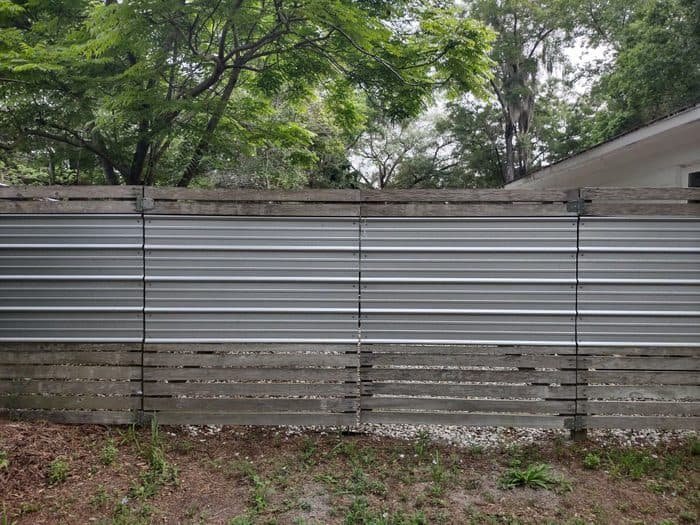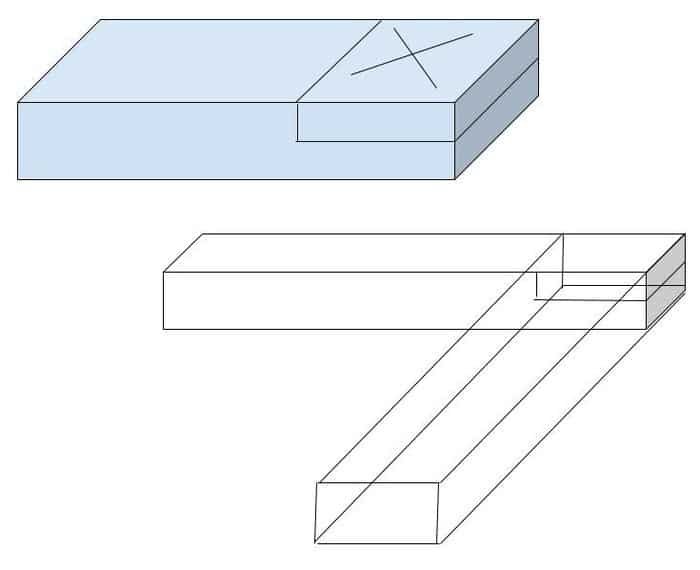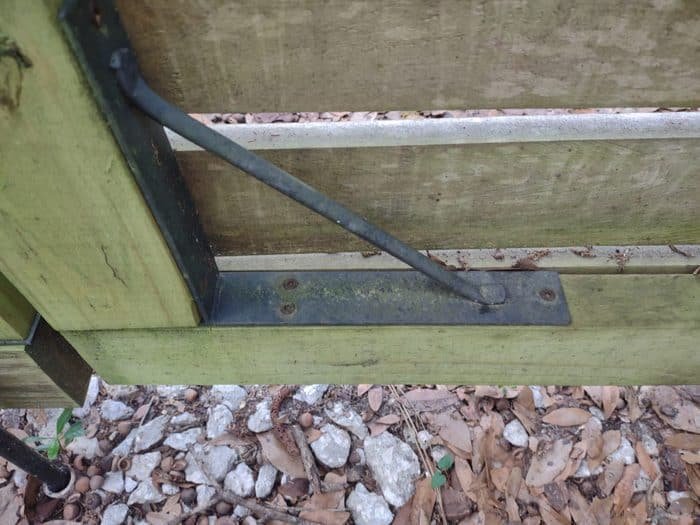How to Build A Fence Gate That Won’t Sag
Building a new fence this Spring along with a new gate? Want to know how to build a fence gate that wont sag? We’ll show you everything you need to DIY a fence gate.
If you want a wide gate to get to your backyard, you need to know how to build it so it won’t sag over time. We’ve all seen or had fence gates that sagged to the point that it wouldn’t open or close properly.
The 2 main reasons most large fence gates sag are inadequate hardware and/or improperly sized support post. No matter if it’s a wood or metal gate frame, using the proper hardware connected to a large support post will help your fence not sag.
Fence gates are very heavy and will lean in the direction that the weight is concentrated. If you have a small support post it will also lean with the gate.

Table of Contents
Fence Gate Frame
I’ve built many fence gates over the years for several different houses we’ve owned. From a small 3 ft carport entrance to (2) 5 ft wide gates for an RV to drive through, seen above. Some I’ve built with all wood frames and others with a metal frame.
They first part to building a non sagging gate is a solid gate frame. I’ll show you the techniques to build a wood gate frame. I’ll also recommend which metal gate frames I think are the most study, yet affordable for DIYers.
Wood Gate Frame
The key to building a strong wood gate frame is cutting half lap joints. These joints help make the horizontal and vertical wood pieces join together as one. Half lap joints can be made with a sliding miter saw or a circular saw.
Where the vertical and horizontal wood pieces of frame meet, you take half of the wood material from each and then lap them over one another. A crude drawing below shows this a bit better for visual people like myself.

Do this on every corner piece of your frame. If you’re using pressure treated wood, you will need to use Gorilla Glue, or polyurethane glue instead of regular wood glue due to the wetness of the PT wood. If using a hardwood, I recommend Titlebond III glue.
I also install 1.25 long screws if using 2×4 materials. If you’re using larger thicker materials for a very large gate, use through bolts to make it even more secure.
Always use a cross brace to keep your frame square. The cross brace is lower on the hinge side for the correct diagonal as you can see from the pic below.
And yes, my dirty gate is in need of spring cleaning. If yours is too, here’s how we cleaned our fence without pressure washing.

Metal Gate Frames
Metal gate frames are great if you don’t want to worry about building a large wood gate. Metal is stronger and lighter which makes the gate less likely to sag on weight alone. I’ve used a couple different varieties of metal brackets/metal frames for gates.
The ones with corner brackets are ok, but their screws starts to rust pretty soon after being exposed to the elements, as seen below. The brackets are not rusted, so if you want to use these, make sure to use polymer coated “deck screws” or stainless steel screws.

The Adjust-A-Gate metal frame is very well built. There are two different versions. The version with two rails works well for shorter gates, less than 6 feet since the metal frame height is only 4 ft tall.
The 3 rail version is better for 6 foot tall gates since its frame is 63 inches tall. The hardware that comes with the kit is top notch and will keep your gate from sagging.
I like the adjust-aagate since you can build it to look like the rest of your fence, and have privacy in your backyard rather than than just a metal gate.
Hardware
If you’re building a wood gate frame, you will need the proper gate hardware. Most hinges you find at the local box store are for smaller gates weighing less than 50 lbs. If you’re building a 100 plus pound gate that is 6 foot or longer, you need very heavy duty hardware.
Strap Hinges
Strap hinges come in different size widths. The longer the strap, the better it will be able to support a very wide gate. This 12 inch wide strap hinge can support 110lbs. If you have a 6 foot wide, 6 foot tall gate, using 3 of these per gate should support it without sagging.
J Bolt Hinges
J Bolt hinges can hold up to 500 lbs and are mostly used with very large metal gates. Some versions are used with wood gates, as with the adjust a gate hardware. Some are a combination of J bolt post connection with a strap hinge.
Support Post
How you support your gate is another big factor in if it starts to sag over time. An inadequately sized post, will start to lean even if it is properly installed. A properly sized post will lean if it isn’t installed correctly. Make sure your posts are properly sized and installed in the ground correctly!
I’ve learned this lesson the hard way. Notice the left side gate and how it’s leaning towards the right side gate. I can push on the post and it will go back to square, so I know that I should have used a bigger post or taller post installed deeper in ground, since the weight of the gate is causing it to lean.

Wood Support Posts
If you are installing a wood post, make sure it’s a 6×6 post for any gate wider than 5 feet. A 4×4 post will support smaller gates but starts to lean when the gate is very wide and most of the weight hangs too far away.
Properly securing the post in the ground is the next thing to make sure your gate doesn’t sag. Always remember the 1/3, 2/3 method with burying posts. If you have a 6 foot tall fence gate, you need at least 3 feet to be buried. In this case, you would use a 6x6x10 post. An 8 foot gate would require a 12 foot post.
Obviously you only need 9 feet, but you can’t buy a 9 foot tall post at the store. Don’t be cheap and get an 8 foot tall post. It’s worth the extra time and money to dig out 1-2 more feet and set it to it won’t budge.
When I install wood posts in the ground, I dig out 6 inches more than I need and put gravel in the bottom of the hole. The gravel will allow water to drain from the bottom of the post insuring it will last longer.
I also try to smooth my concrete at an angle away from the post at the top of the dirt line. This is another point of failure with wood posts installed in the ground with concrete. I’ve seen posts snap right where the water collected on top of the concrete after just a few years in the ground.
Metal Support Posts
Metal posts will last longer than wood posts. They don’t rot when exposed to the elements but they can rust if they don’t have the proper protection. Make sure your posts are either galvanized or powder coated to protect from rusting.
Since metal is stronger, you don’t need the same size metal post as wood post. Most 3.5×3.5 metal posts will handle a lot more weight than a 6×6 wood post.
While metal will last longer, it will cost you a lot more to use metal gate posts.
Conclusion
Building a fence gate that won’t sag isn’t difficult if you use the proper materials and correct installation methods listed above. Hopefully we’ve shown you how to build your own gate and enjoy many years of not worrying about it sagging.






